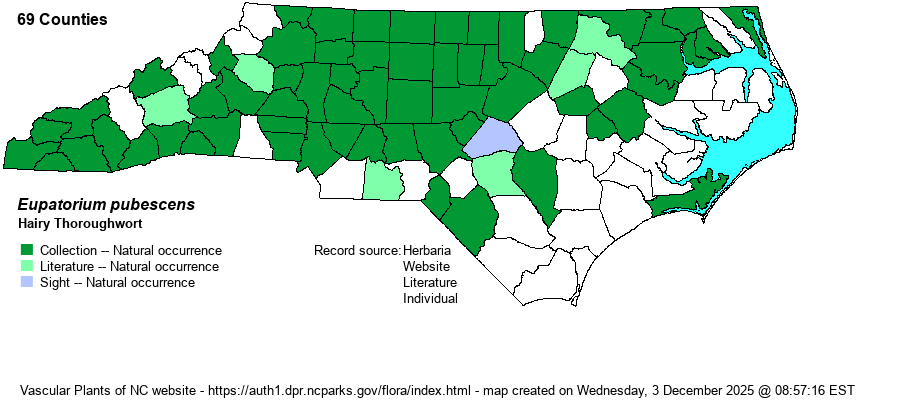| taxonName | relationship | relatedTaxonName | relatedTaxonRefText | relComments |
|---|
|
|
|
| Eupatorium pubescens | = | Eupatorium rotundifolium var. ovatum | Gleason and Cronquist (1991) | |
| Eupatorium pubescens | = | Eupatorium rotundifolium var. ovatum | Flora of North America (1993b, 1997, 2000, 2002a, 2002b, 2003a, 2004b, 2005, 2006a, 2006b, 2006c, 2007a, 2009, 2010) | |
| Eupatorium pubescens | = | Eupatorium rotundifolium var. ovatum | Gleason (1952) | |
| Eupatorium pubescens | = | Eupatorium rotundifolium var. ovatum | Kartesz (1999) | |
| Eupatorium pubescens | = | Eupatorium rotundifolium var. ovatum | | |
| Eupatorium pubescens | = | Eupatorium rotundifolium var. ovatum | Vascular Flora of the Southeastern States (Cronquist 1980, Isely 1990) | |
| Eupatorium pubescens | = | Eupatorium rotundifolium var. ovatum | Wofford (1989) | |
| Eupatorium pubescens | < | Eupatorium rotundifolium | Godfrey and Wooten (1979, 1981) | |
| Eupatorium pubescens | < | Eupatorium rotundifolium var. ovatum | Radford, Ahles, and Bell (1968) | (also see E. cordigerum) |
| Eupatorium pubescens | < | Eupatorium pubescens | Small (1933, 1938) | (also see E. cordigerum) |
| Eupatorium pubescens | = | Eupatorium rotundifolium ssp. ovatum | | |
| Source: Weakley's Flora |

